Best macro lenses 2025: Get close to nature with incredible detail
From flowers to fine textures, these macro lenses bring tiny subjects into sharp focus — find the perfect lens to elevate your close-up photography.

Macro photography opens up a world of detail that we often can't see with the naked eye, whether it's the intricate patterns on an insect's wing or the delicate texture of a flower petal. But in order to bring those tiny subjects into stunning clarity, you need the right lens paired with one of the best cameras.
Unlike astro lenses and wildlife lenses, macro lenses are designed for close focusing, allowing you to get extremely close to your subject while maintaining sharpness and detail. True macro lenses offer a 1:1 magnification ratio, meaning your subject will appear life-size on your camera's sensor, with some lenses providing a magnification ratio of up to 5:1.
We've rounded up the best macro lenses for different camera brands, a weird and wonderful probe lens for pros and macro filters for beginners who want to dip their toes into the minuscule world of macro without the big price tag.
The quick list
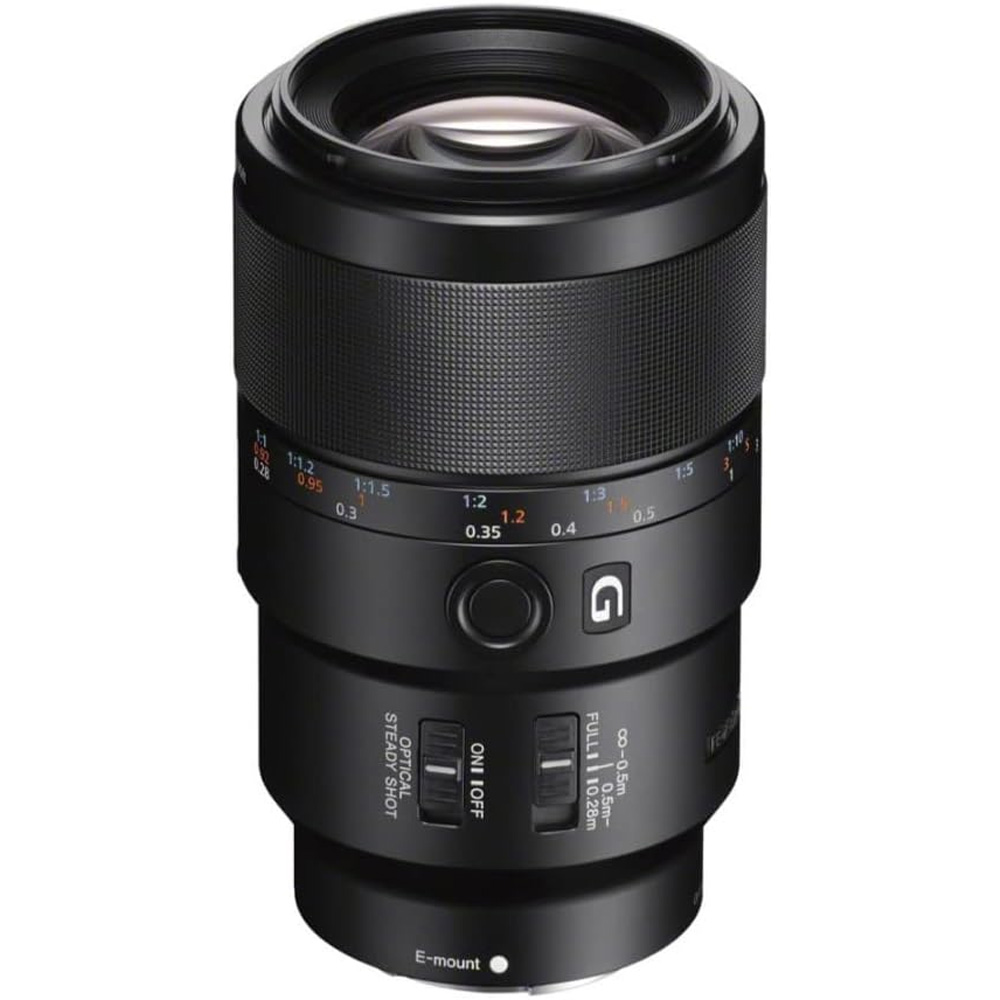
Best Sony
Impeccably sharp and fast, this lens is the go-to macro option for Sony shooters — and the manual focus clutch makes switching between AF and MF a breeze.
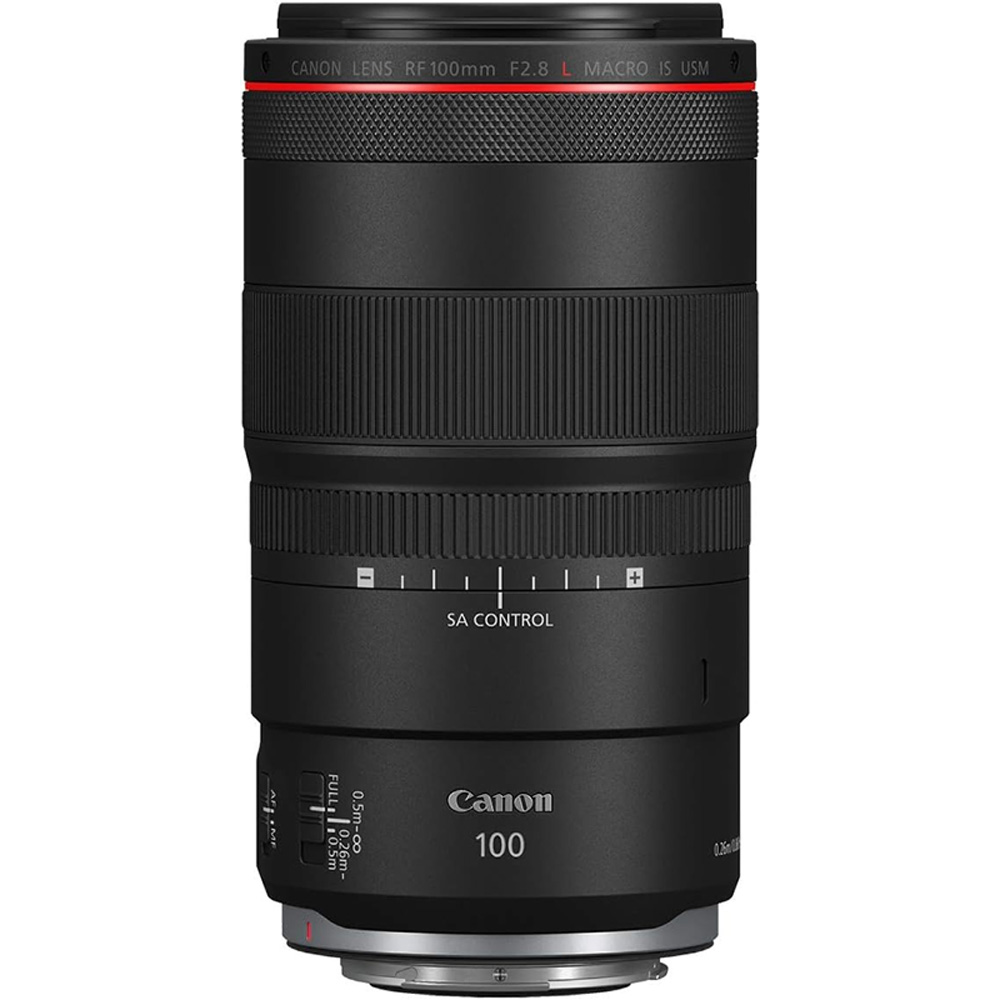
Best Canon
Control the softness of your background bokeh with Canon's neat Spherical Aberration (SA) control ring to produce incredible macro and portrait photos.
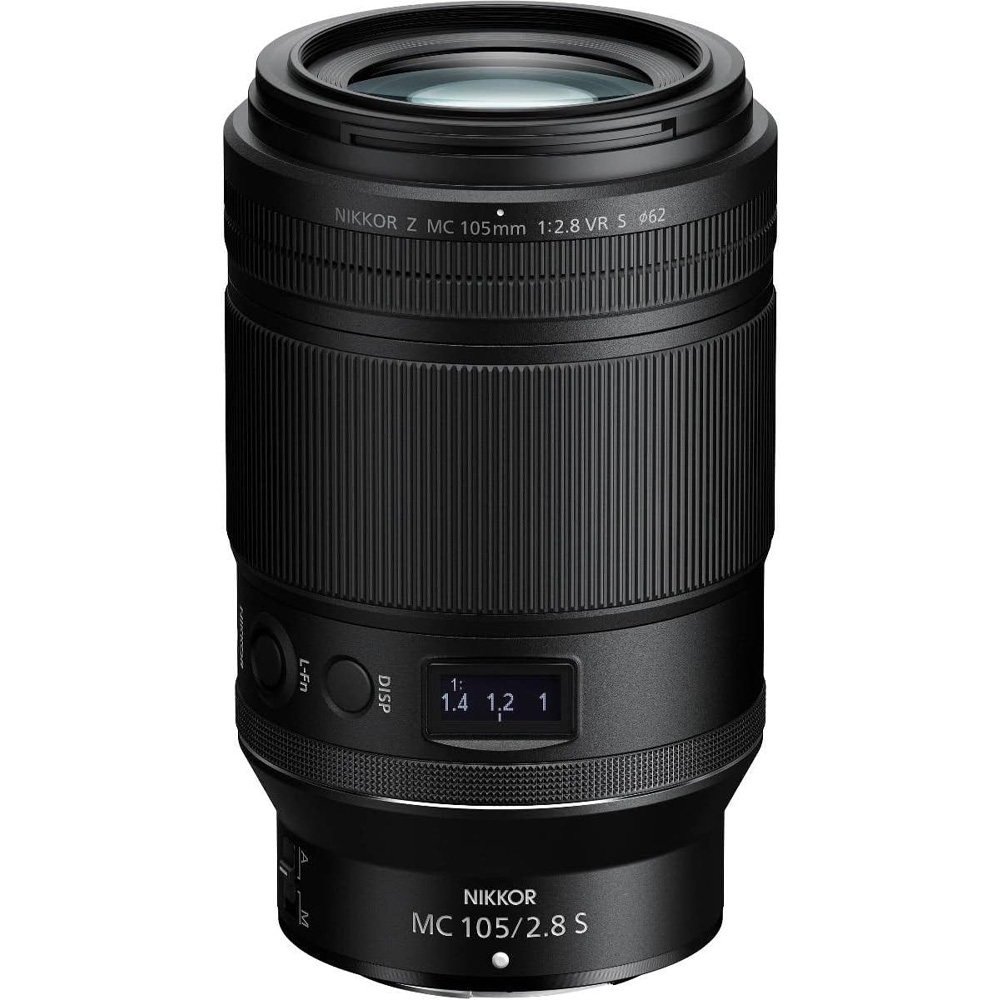
Best Nikon
This lens is one of the sharpest macro lenses on the market, but its autofocus speed is noticeably slow compared to other models.
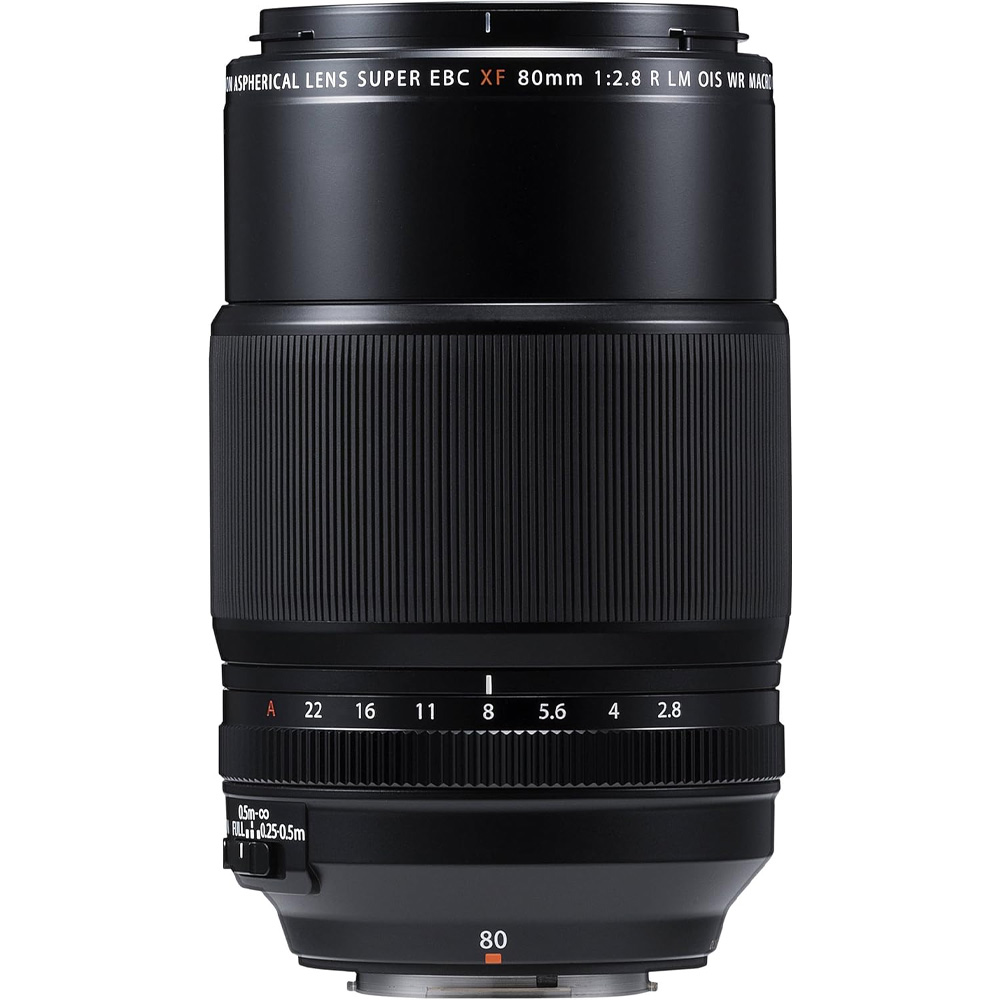
Best Fujifilm
If you're looking to invest, this is the sharpest macro lens you can get for Fuji cameras — but it's not cheap.
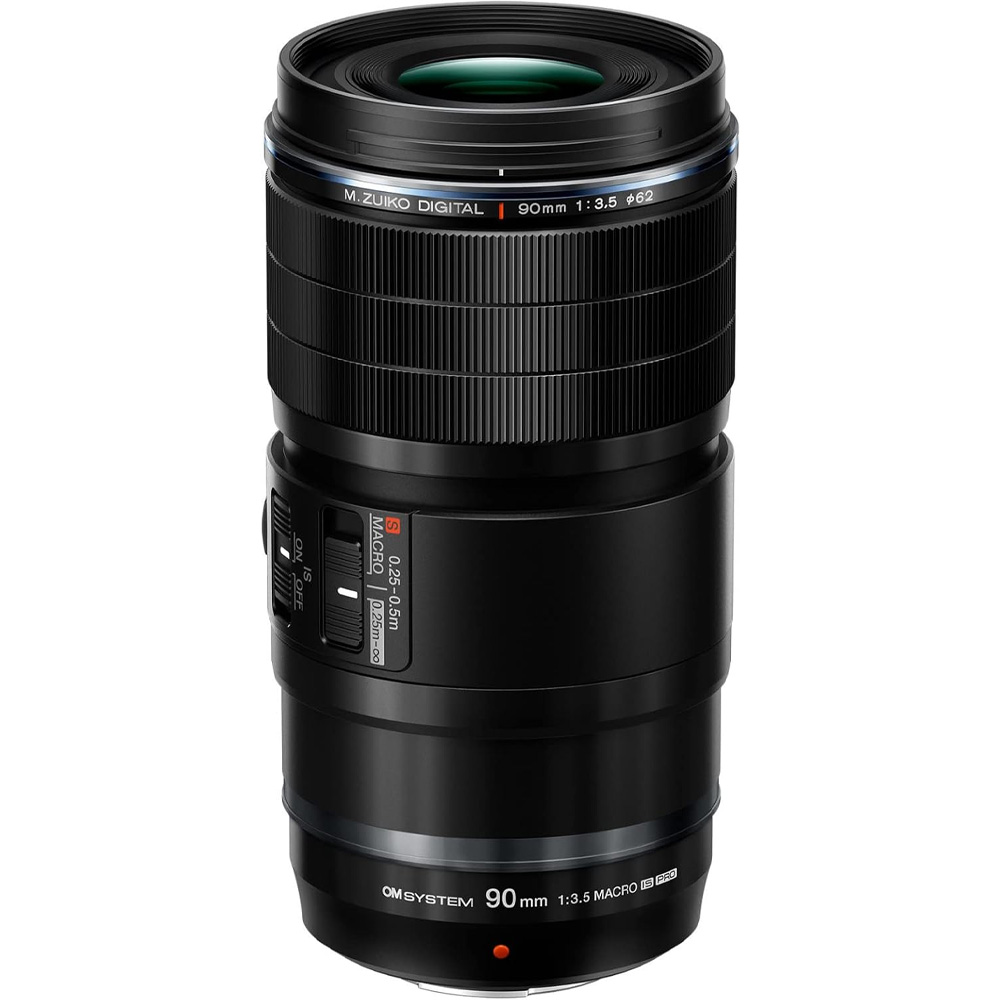
Best Micro Four Thirds
A super sharp lens with a 2:1 magnification ratio and ultra-close working distance for extreme close-up work.
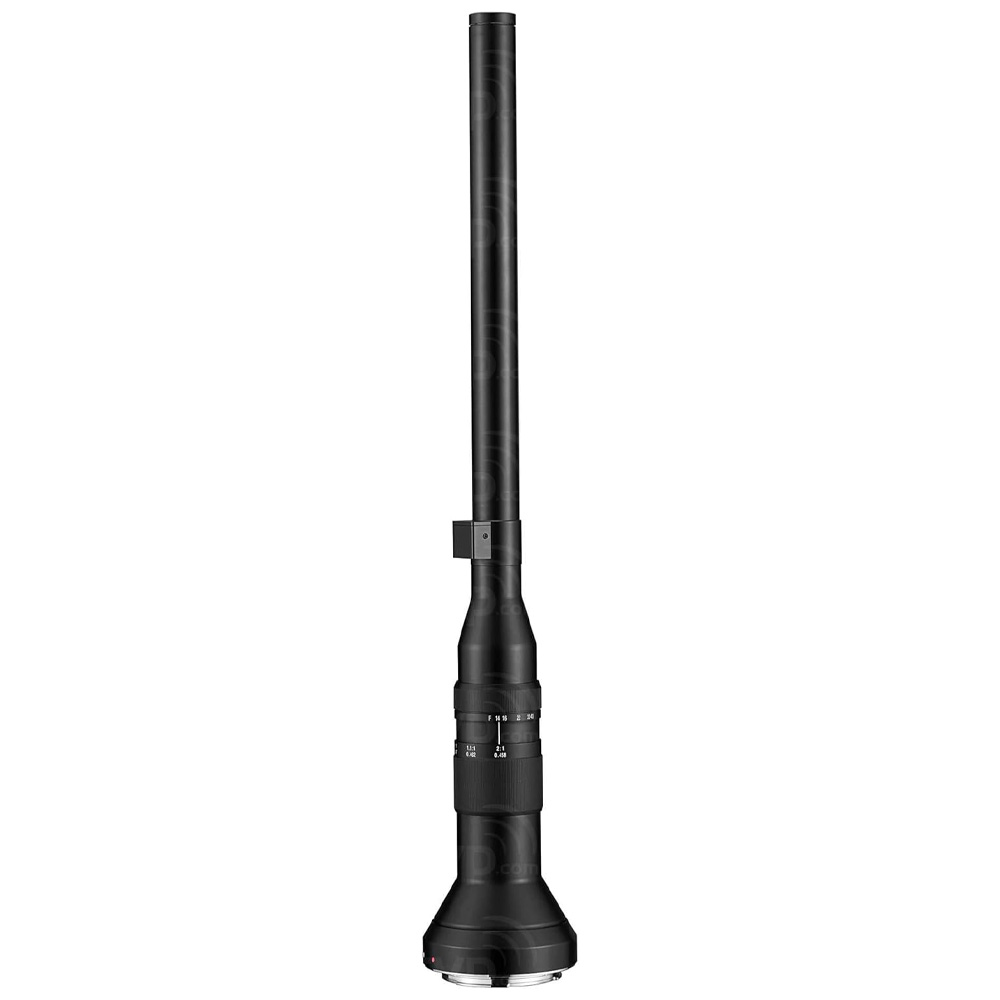
Best premium macro lens
A weird and unique option for professionals who shoot commercial and product photography and video work.
The best macro lenses we recommend in 2025
Why you can trust Live Science
Best Sony macro lens

Sony FE 90mm F2.8 Macro G OSS
Specifications
Reasons to buy
Reasons to avoid
✅ You want a lightweight lens: Considering its metal construction, it's compact and lightweight.
✅ You want exceptional detail: It produces beautifully sharp images without much chromatic aberration or flare.
❌ You rely on autofocus: Users have said that this lens hunts a little more than they'd like.
❌ You want mega-smooth bokeh: It'll be fine for most, but the bokeh does show the aperture blades and isn't perfectly circular.
🔎 Sony FE 90mm f/2.8 Macro G OSS: A true 1:1 macro lens that produces razor-sharp images with outstanding detail and can double as a beautiful portrait lens, giving you more bang for your buck. Its fast, effective autofocus makes it a dream for macro shooters.
For Sony shooters who want to take up macro, the Sony FE 90mm f/2.8 Macro G OSS is the one to beat. It's a standout lens suitable for both macro enthusiasts and professionals, boasting a robust, weather-sealed metal construction to endure various shooting conditions.
The manual focus clutch is a standout feature, enabling you to instantly switch between auto and manual focus just by pulling the focus ring back and forth — a huge plus when we need to fine-tune the focus without breaking flow. The lens also features a focus limiter and customizable focus hold button, both of which are incredibly helpful for macro photography.
This lens is razor-sharp, even wide open at f/2.8, making it useful for landscapes and portraits as well as close-up macro photography at a 1:1 magnification ratio. The resolution and contrast are excellent, with softness only creeping in due to diffraction at around f/16, and it has good control of aberrations and flare, although the aperture blades are visible in the bokeh.
Sony has a reputation for having the best autofocus in the business, and this lens is no exception with its whisper-quiet and accurate autofocus, although some users have stated that it hunts a little more than they'd like. It also suffers with focus breathing quite substantially, making it tricky for video shooters.
It has a close focus distance of 11 inches (28 cm), which is one of the longest in this guide; and the lens itself is on the shorter side at 5.16 inches (130.5 mm) — great for portability, but that means that with a flange distance of 18 mm on Sony E mount cameras, the working distance of this lens will be approximately 5.17 inches (13.15 cm). Not bad, but the Canon lens mentioned below can get even closer.
Attributes | Notes |
|---|---|
Design | Manual focus clutch makes switching between AF and MF smooth and effortless. |
Performance | Produces sharp and detailed images, even wide open. |
Functionality | True 1:1 macro with effective autofocus and image stabilization. |
Best Canon macro lens
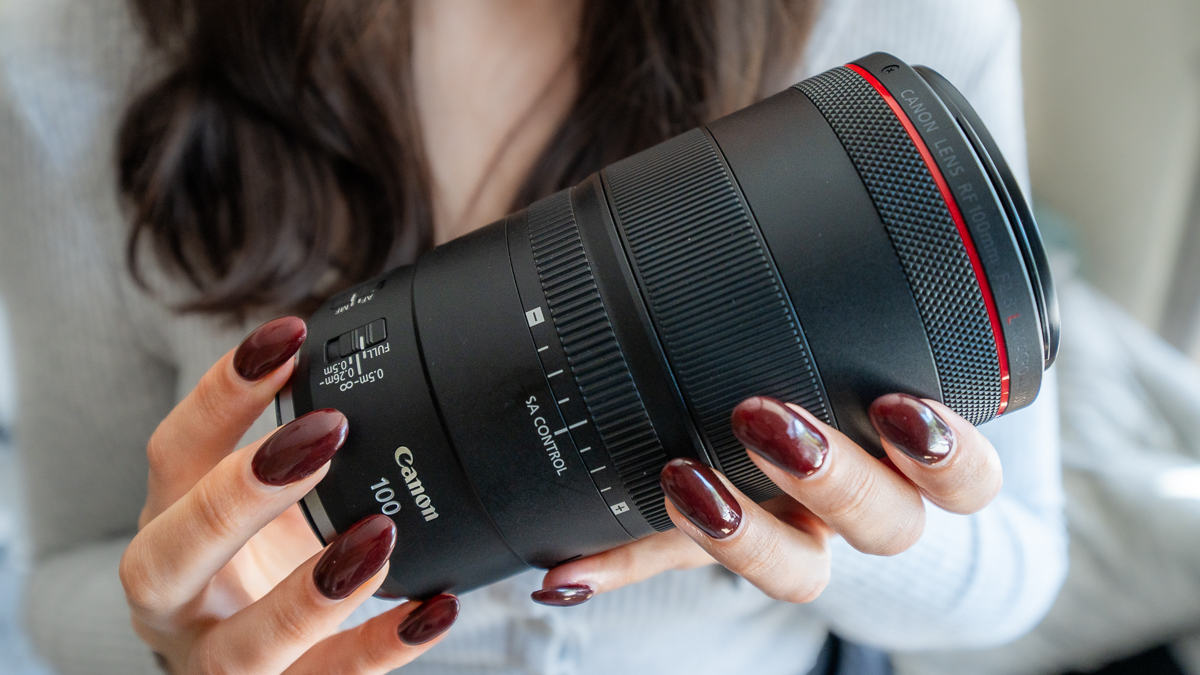
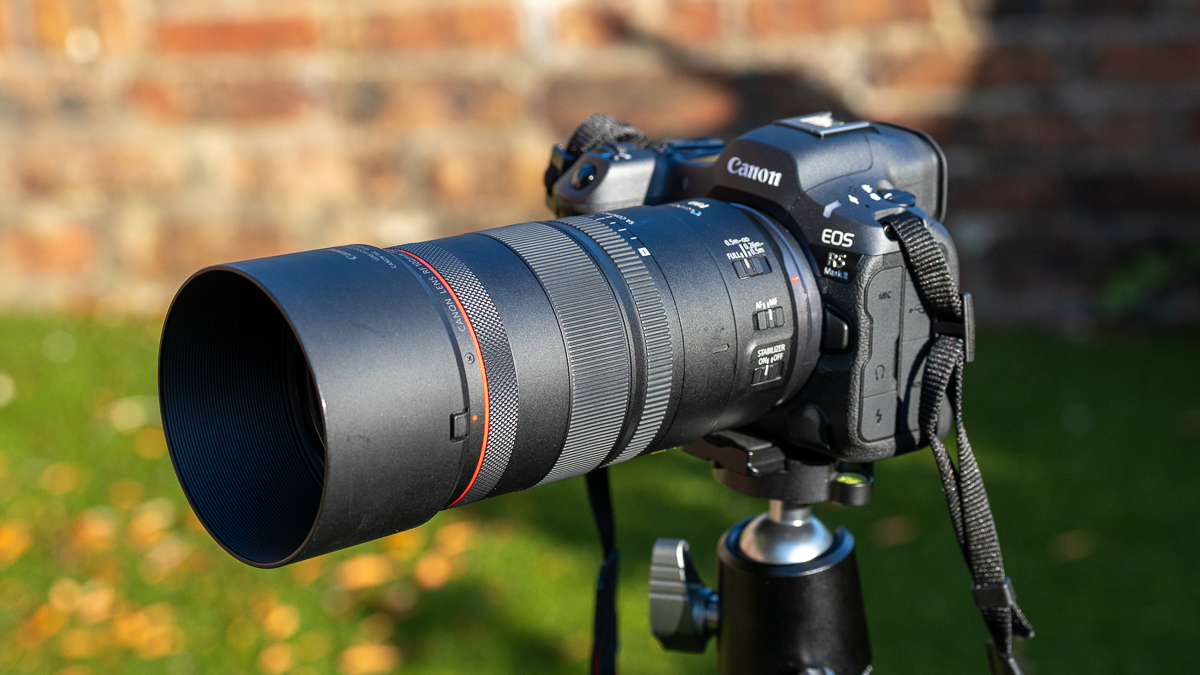
Specifications
Reasons to buy
Reasons to avoid
✅ You want to get super-close to your subject: It has a working distance of approximately 3.7 inches (94 mm).
✅ You want more than 1:1: The 1.4:1 magnification ratio gives it that extra edge over the competition.
🔎 Canon RF 100mm F2.8L Macro IS USM: An outstanding macro lens with a 1.4:1 magnification ratio and excellent working distance of 3.7 inches (9.4 cm). Plus, the Spherical Aberration ring gives extra control over your background bokeh. ★★★★★
Design-wise, this Canon L lens is exactly the high standard we've come to expect from Canon, with pretty good weather sealing and a high-quality construction. It's the biggest and heaviest full-frame lens in this guide, although it is about average for this type of focal length, weighing 25.8 oz (730 g) with a length of 5.83 inches (148 mm). That said, during our full Canon RF 100mm F/2.8L Macro IS USM review, we found it comfortable to shoot handheld and the weight didn't bother us.
A neat standout feature of this lens is the Spherical Aberration (SA) control ring on the lens barrel. When set to the minus ( - ) setting, the image zooms out slightly while making your background look increasingly soft. When you set it to the other extreme at the plus ( + ) end, it zooms in slightly while still producing a soft background, although this time the bokeh is harsher and gives a much busier look. There's also the option to lock the lens at the standard setting should you not want to fuss with the background too much, but we think it adds a lovely touch for users who also shoot portraits in a soft and dreamy style.
The autofocus works incredibly well, as expected, effortlessly and silently locking onto your subject, although it does suffer a little from focus breathing. There's also a customizable control ring at the top of the lens, although its clickable nature might annoy some users. There's a slight amount of focus shifting when using autofocus, but as most macro shooters use manual focus, this shouldn't be much of an issue.
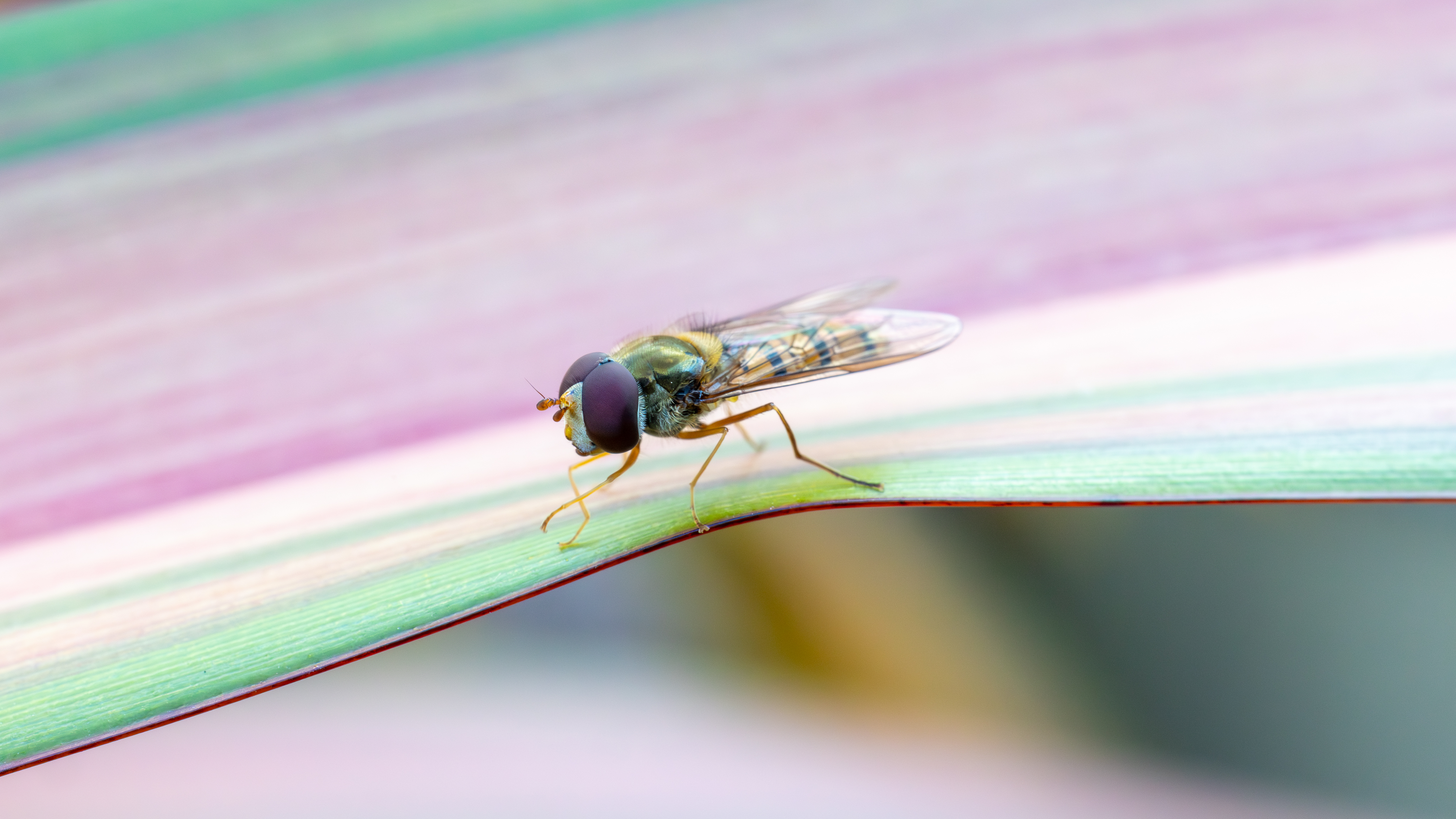
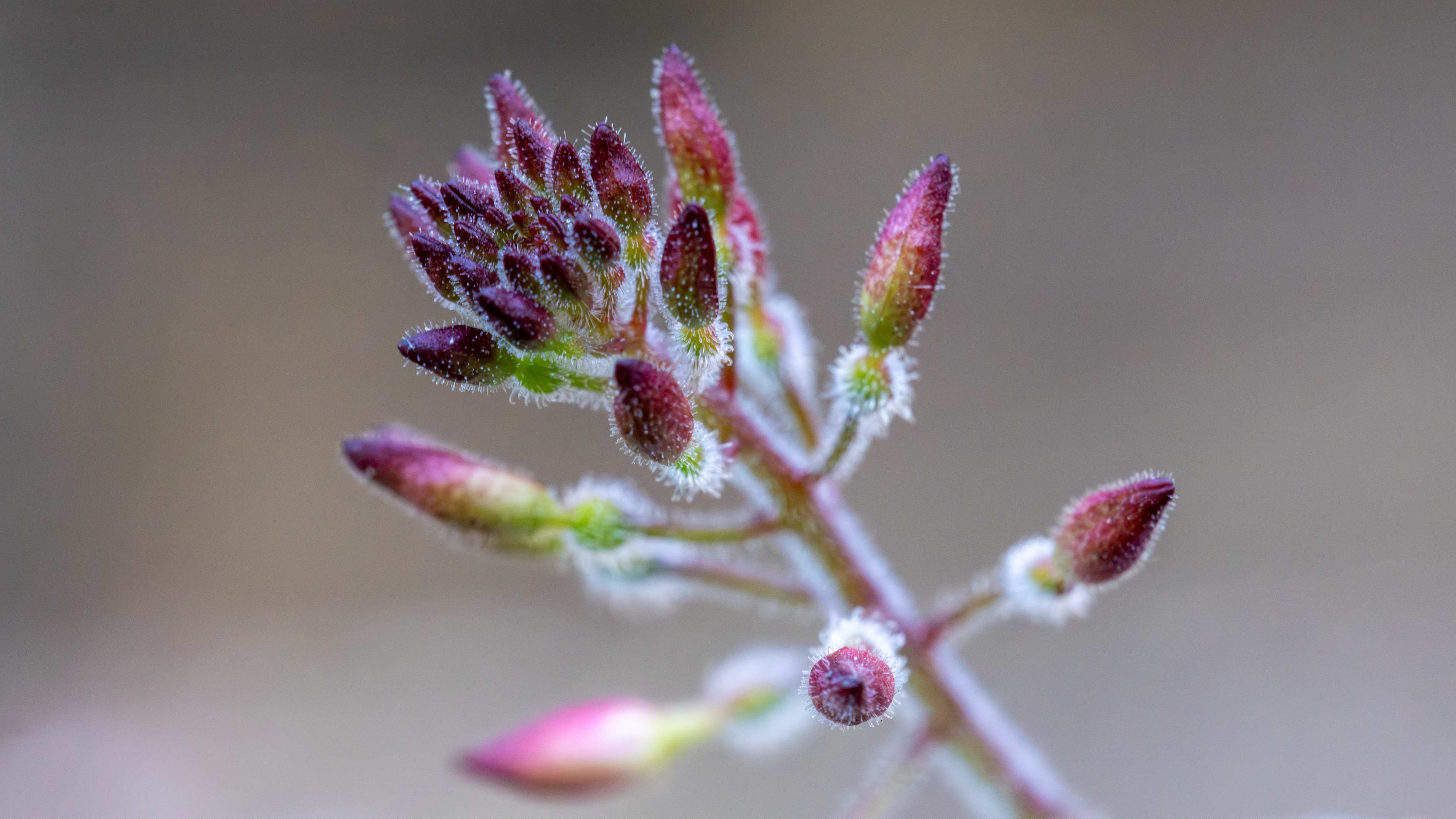
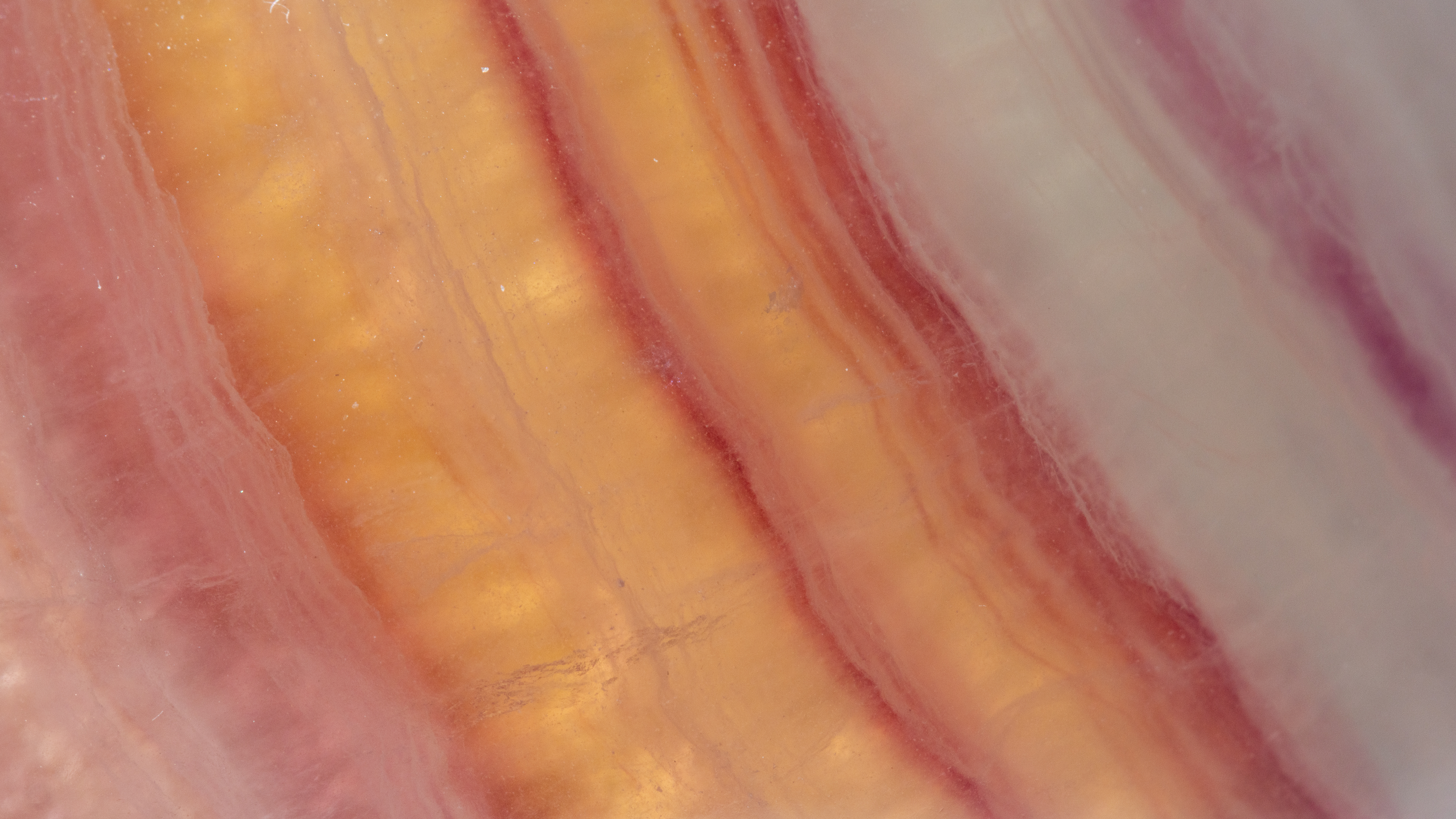
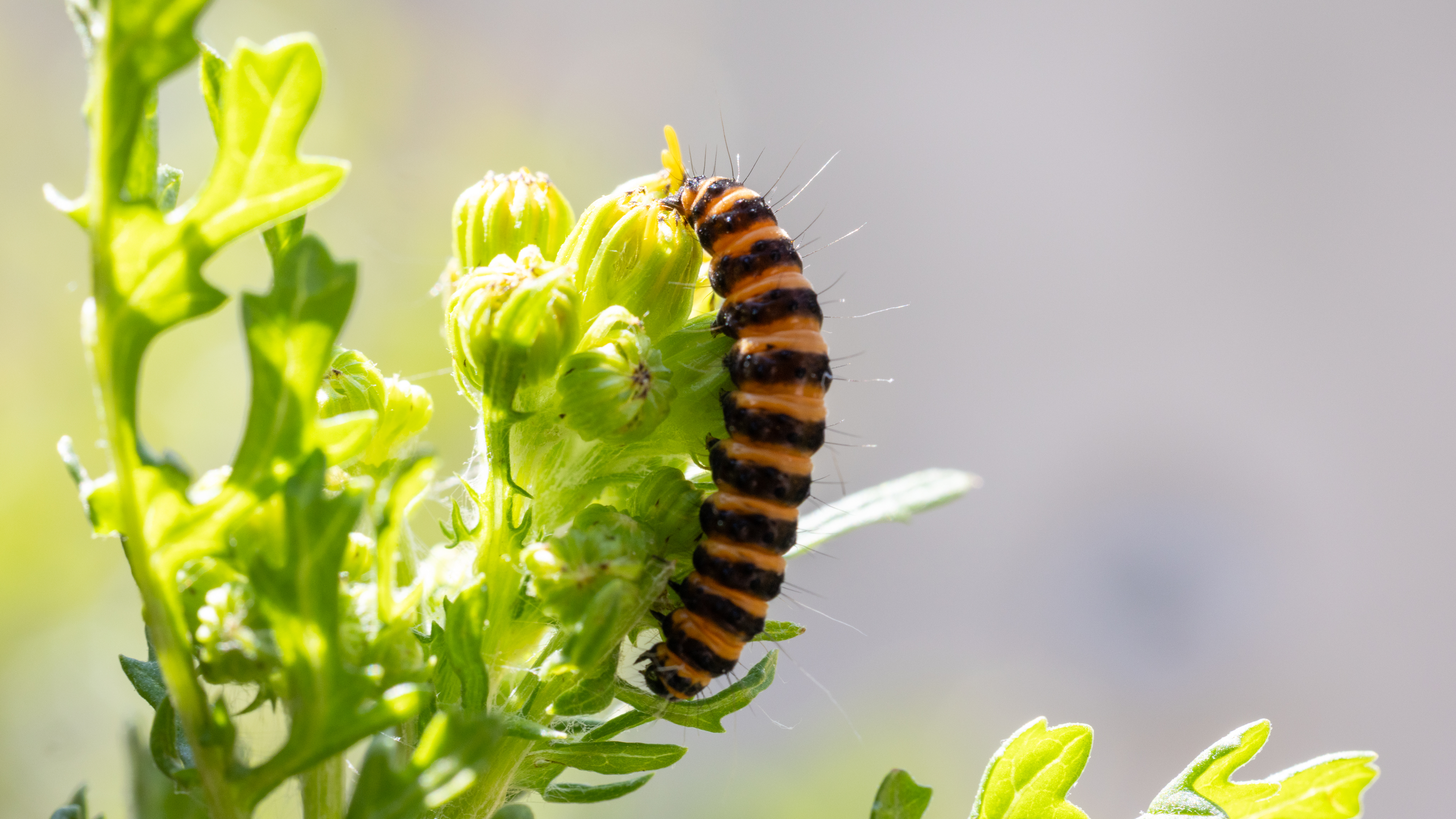
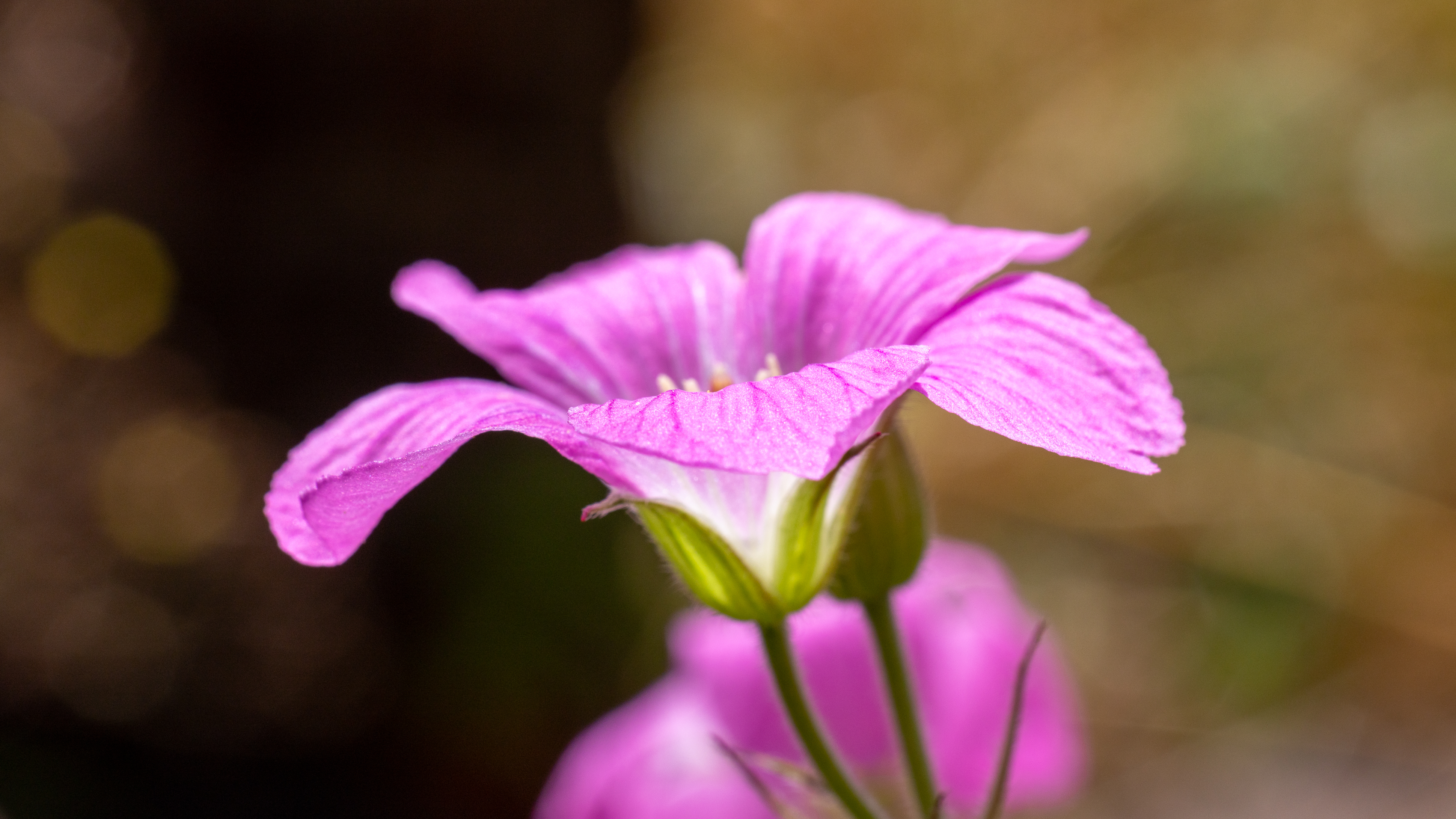
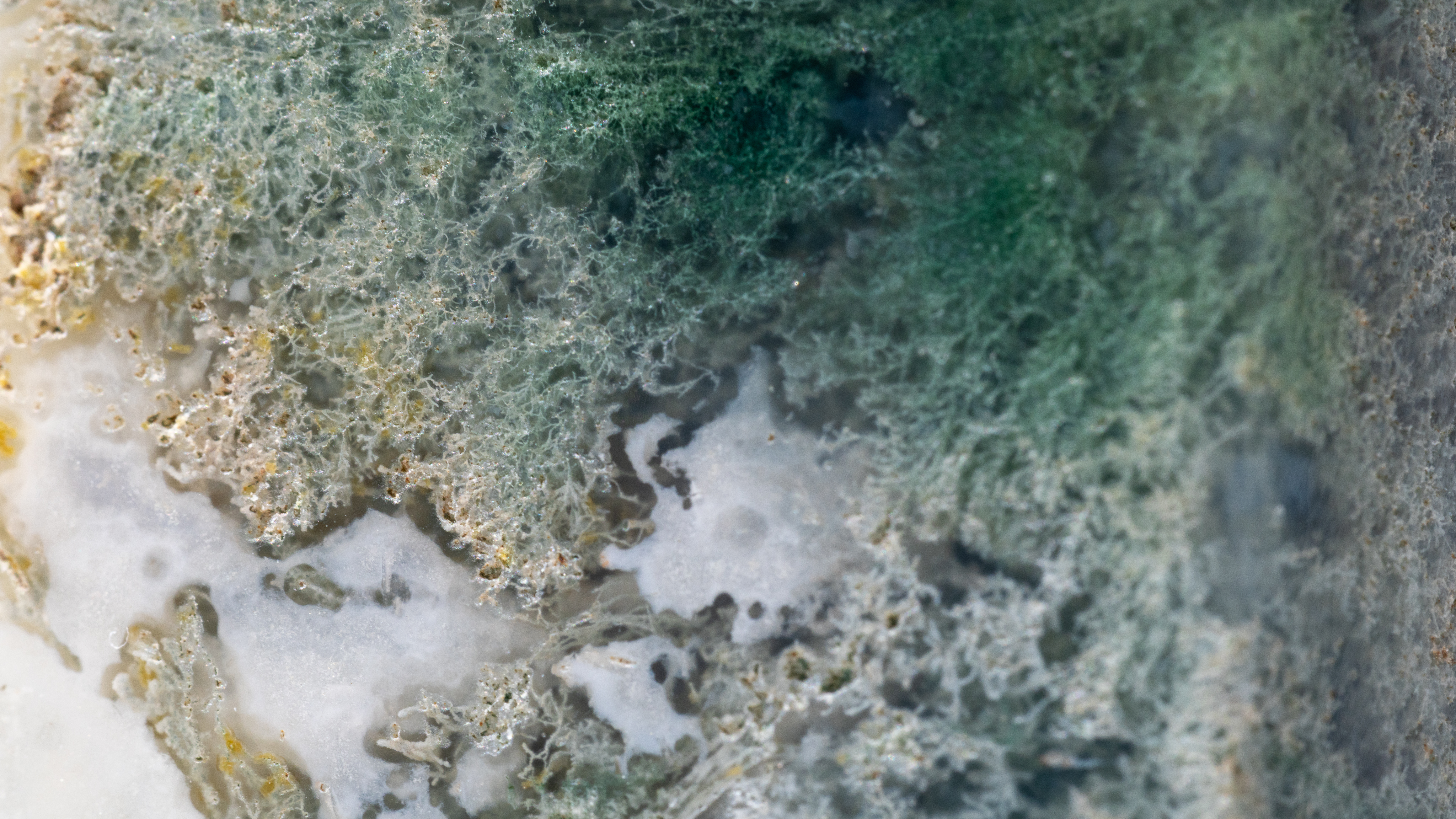

The image quality for macro is superb, with its 1.4:1 magnification ratio enabling you to get that extra bit more magnification over some of its competitors. Not only that, but it has the shortest working distance of all the full-frame lenses in this list by some margin at just 3.7 inches (9.4 cm).
- Read our full Canon RF 100mm F/2.8L Macro IS USM review
Attributes | Notes |
|---|---|
Design | Spherical Aberration ring adds more options for controlling your background. |
Performance | Sharp images and fast autofocus. |
Functionality | Great working distance of 3.7 inches (9.4 cm) and 1.4:1 magnification ratio. |
Best Nikon macro lens
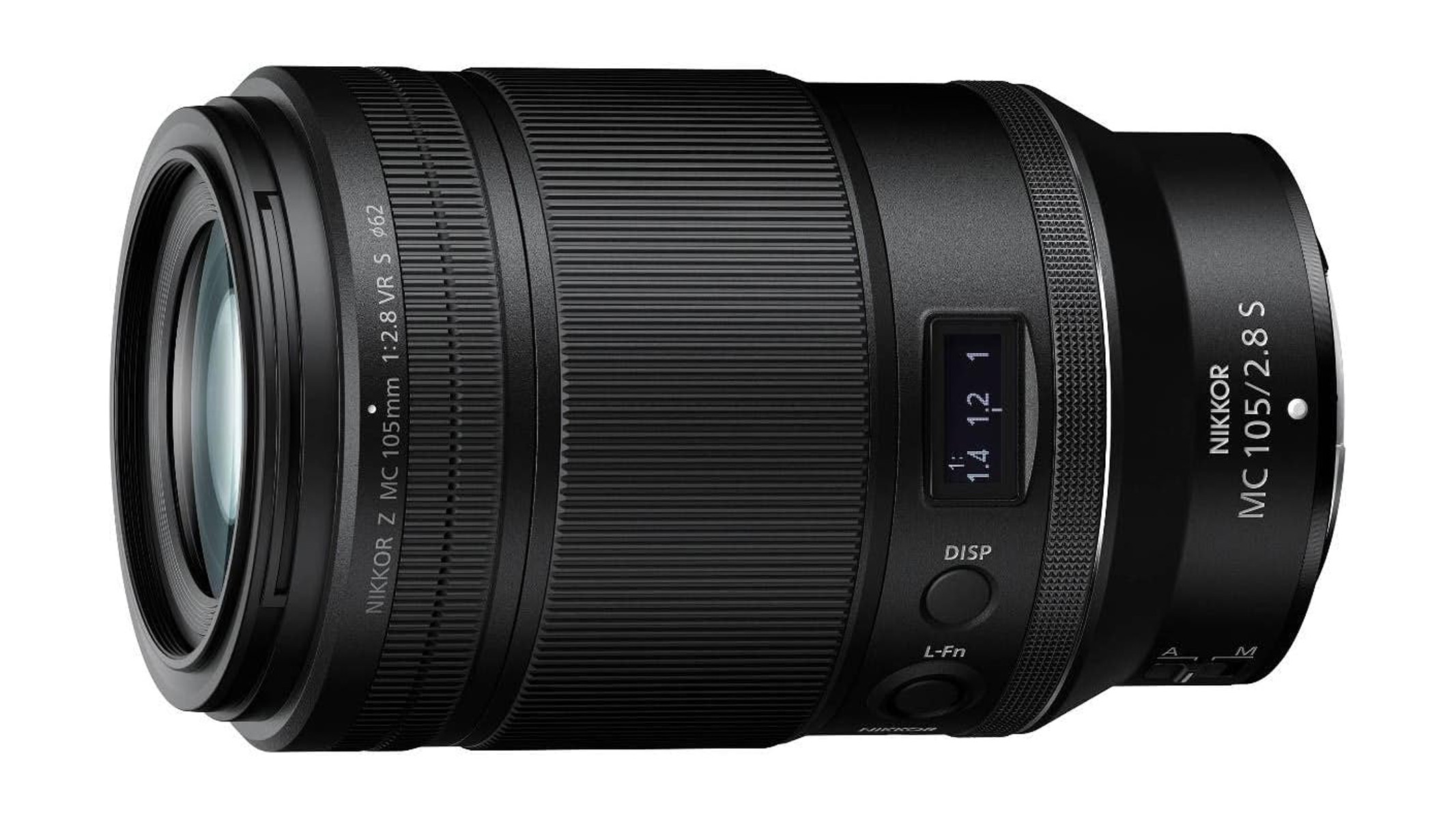
Nikon NIKKOR Z MC 105mm f/2.8 VR S
Specifications
Reasons to buy
Reasons to avoid
✅ You shoot flowers or fungi: It's super-sharp and detailed when photographing still subjects.
✅ You want the sharpest lens on the market: This is the one!
🔎 Nikon NIKKOR Z MC 105mm f/2.8 VR S: A fantastically sharp lens that comes at a great price. It's lightweight and well built, but the autofocus is slower than its competitors.
In terms of image quality, this is one of the sharpest macro lenses you can buy, producing razor-sharp images from the center of the frame to the corners from f/2.8 to f/11, with softness only creeping in due to diffraction. There's barely any distortion, only a small amount of vignetting at f/2.8 and you have to look exceptionally hard to find any chromatic aberration.
But where its strengths lie in detail and sharpness, its downfall is the autofocus speed. While the autofocus is accurate when you nail it, it's slower to lock onto subjects than other lenses and if you miss, it can hunt around for a bit before it finds the subject again. This isn't a deal-breaker necessarily, but it's worth considering if you photograph moving or skittish subjects and don't want to use manual focus.
On the lens barrel itself is a quick-check OLED display panel where you can adjust your aperture, focus distance and magnification ratio, although this would likely be more useful if your camera is set up on a tripod and you can't see the LCD screen. There's also your standard control ring to control ISO, exposure compensation or aperture, alongside a shortcut button and a focus limiter switch.
The rubberized focus ring is very generously sized to make for easy and smooth manual focusing when shooting precision macro photography. The lens does suffer from focus breathing, although that's quite normal for a macro lens.
Overall, it's an outstanding and surprisingly lightweight lens. This is the most affordable full-frame option in this list, with a pretty decent price for such a top-of-the-range optic, as long as the autofocus speed doesn't put you off.
If, however, you're an advanced DSLR shooter and don't mind carrying around a somewhat heavier lens, the Nikon 200mm f/4D IF-ED is a fantastic lens and a favorite of our contributing expert and photographic author, Tim Boomer.
Attributes | Notes |
|---|---|
Design | OLED panel for quick adjustments. |
Performance | Sharp and detailed images throughout the frame. |
Functionality | Autofocus speed is on the slower side. |
Best Fujifilm macro lens
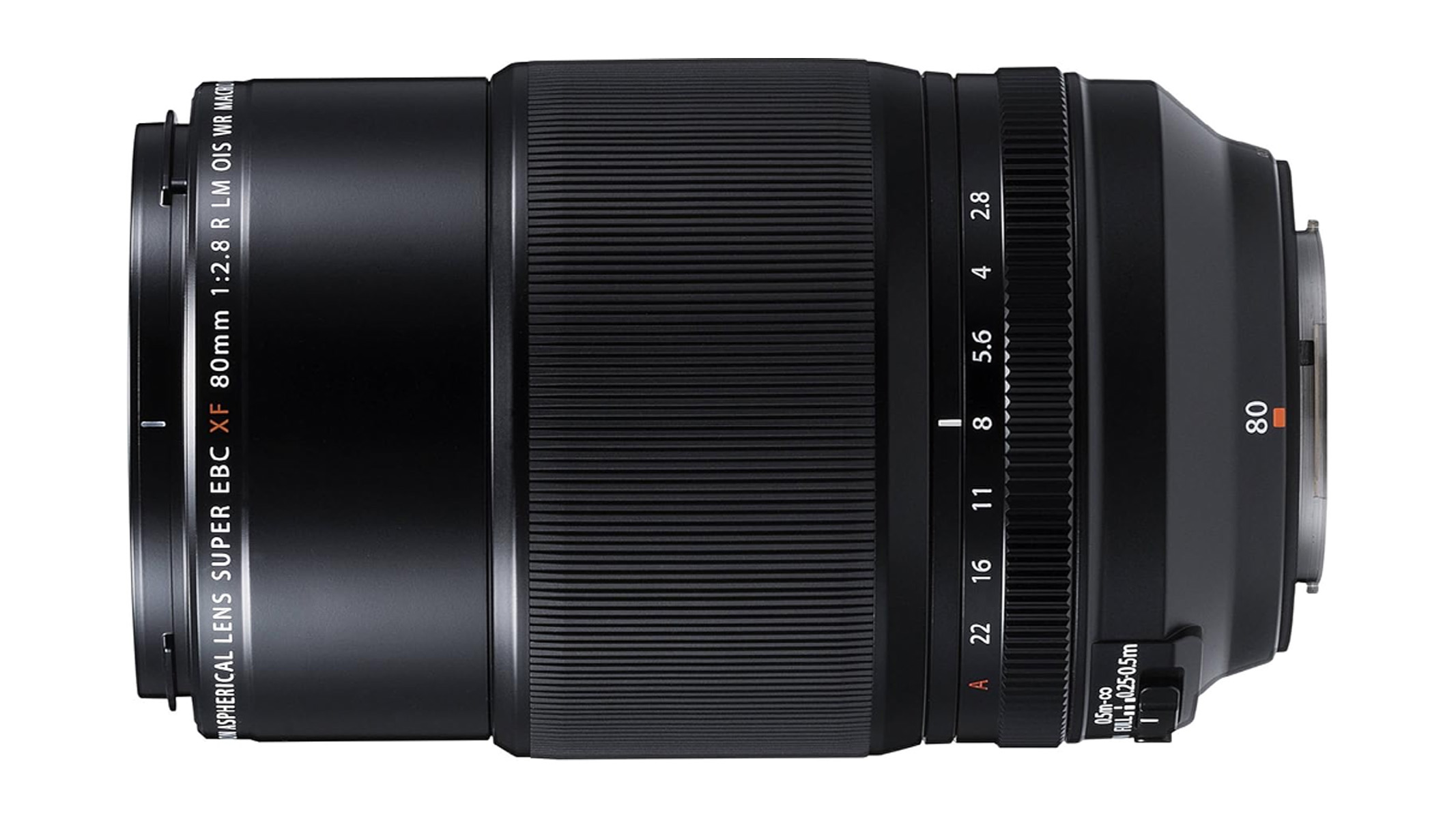
FUJIFILM XF80mm f/2.8 R LM OIS WR Macro
Specifications
Reasons to buy
Reasons to avoid
✅ You want a super-sharp lens: For macro on Fuji, this is the one to beat.
✅ You shoot multiple styles: This lens will suit users who shoot portraits and landscapes as well as macro photographers.
❌ You want a small and lightweight lens: For an APS-C lens, it's strangely big and heavy.
❌ You need fast autofocus: If you use autofocus for other photographic styles, this lens' autofocus isn't the fastest.
🔎 FUJIFILM XF80mm f/2.8 R LM OIS WR Macro: A super-sharp lens with a super-high price tag, but for users looking to invest, it's hard to beat. The autofocus speed isn't the best, and it's not the smallest lens, but you can't argue with the astounding image quality.
When it comes to macro shooting on Fujifilm's APS-C system, the XF80mm f/2.8 R LM OIS WR is the obvious choice for serious macro shooters. It can shoot true 1:1 macro with a working distance of approximately 4 inches (10.2 cm). However, it's incredibly expensive and isn't the perfect lens by any means, so the hefty price tag could put a lot of users off.
That said, if you have the cash to invest and will also get your money's worth with portraits and landscape photography alongside macro, this lens is one of the sharpest you can buy and has astounding image quality. At f/5.6, the image is almost perfect throughout the entire frame, and softness only begins to creep in at f/16 due to diffraction. It also handles chromatic aberration and flare quite well.
Although most macro shooters shoot in manual focus, it's worth noting that the autofocus speed is only average, which, in our opinion, isn't quite good enough for such an expensive lens. You can also hear an audible whirring noise when focusing between different subjects, and users have stated that it does occasionally hunt around for objects, and that it can struggle in low-light scenes. Some users have also experienced jerky manual focus on some older Fuji cameras.
If you're particular about your bokeh balls for wide open shots, then we noticed the bokeh on this lens looked a little squished. It has a bizarre lemon shape to it and can look somewhat swirly, but it gets more circular as you narrow the aperture.
Overall, it's a very sharp lens, but eye-wateringly expensive for what it is. It would best suit users who shoot multiple disciplines and need the sharpest lens possible. If you still want to shoot macro but you're on a budget, the XF60mm f/2.4 R Macro and XF30mm f/2.8 R LM WR Macro are both around half the price of this lens.
Attributes | Notes |
|---|---|
Design | Fairly big and heavy. |
Performance | Super-sharp image quality throughout. |
Functionality | Autofocus speed is only average. |
Best Micro Four Thirds macro lens

OM SYSTEM M.Zuiko Digital ED 90mm f/3.5 Macro IS PRO
Specifications
Reasons to buy
Reasons to avoid
✅ You want a compact lens: It's surprisingly lightweight and compact, considering its metal construction.
✅ You want more magnification: It has a 2:1 magnification ratio with a very short working distance.
❌ You're a macro novice: It's at the more expensive end of the spectrum. The OM System 60mm F2.8 Macro is great for beginners and only costs a few hundred dollars.
❌ You're on a budget: It's quite pricey if you only shoot macro at the hobby level.
🔎 OM SYSTEM M.Zuiko Digital ED 90mm f/3.5 Macro IS PRO: An impeccable lens for macro photography capable of a 2:1 magnification ratio, combined with a super-close working distance and stunning image quality.
Cutting straight to the chase, the image quality from this lens is exceptional. Images are sharp even at f/16, aberrations are very well controlled and it produces lovely creamy bokeh. And with a working distance of approximately 2.7 inches (6.87 cm), you can get ridiculously close to your subject.
The lens itself has a 2:1 magnification ratio, but by adding a compatible teleconverter, it can become up to a 180 mm equivalent macro lens with 4x magnification. However, this can limit the maximum aperture and reduce the precious light needed for macro at such high magnification, so there's something of a balancing act involved here, and 4x magnification is best reserved for photographers who know what they are doing.
It also features a manual focus clutch to effortlessly switch between manual and autofocus without having to fiddle with switches or buttons that break your flow (a feature we personally love, and music to the ears of anyone with long nails). The focus ring is very smooth and tactile for making fine adjustments, and the focus limiter helps with the autofocus when shooting such extreme close-ups.
The lens is also entirely made of metal, so it'll certainly hold up under extreme conditions. Even with all the metal and glass elements, it's an incredibly lightweight lens at just 1 lb (453 g), making it the lightest lens in this list, and only a few millimeters longer than the Sony 90 mm. This is particularly advantageous for handheld macro shooting, and even if you mount it on a smaller camera body, the weight should be well distributed.
As far as autofocus goes, the speed is good and accurate, although it can sometimes struggle if you're shooting fast-moving subjects. Overall, it's an outstanding lens — if you can afford it.
Attributes | Notes |
|---|---|
Design | Very small and lightweight construction. |
Performance | Sharp images through to f/16. |
Functionality | 2:1 magnification ratio with 2.7 inches (6.87 cm) working distance. |
Best premium macro lens
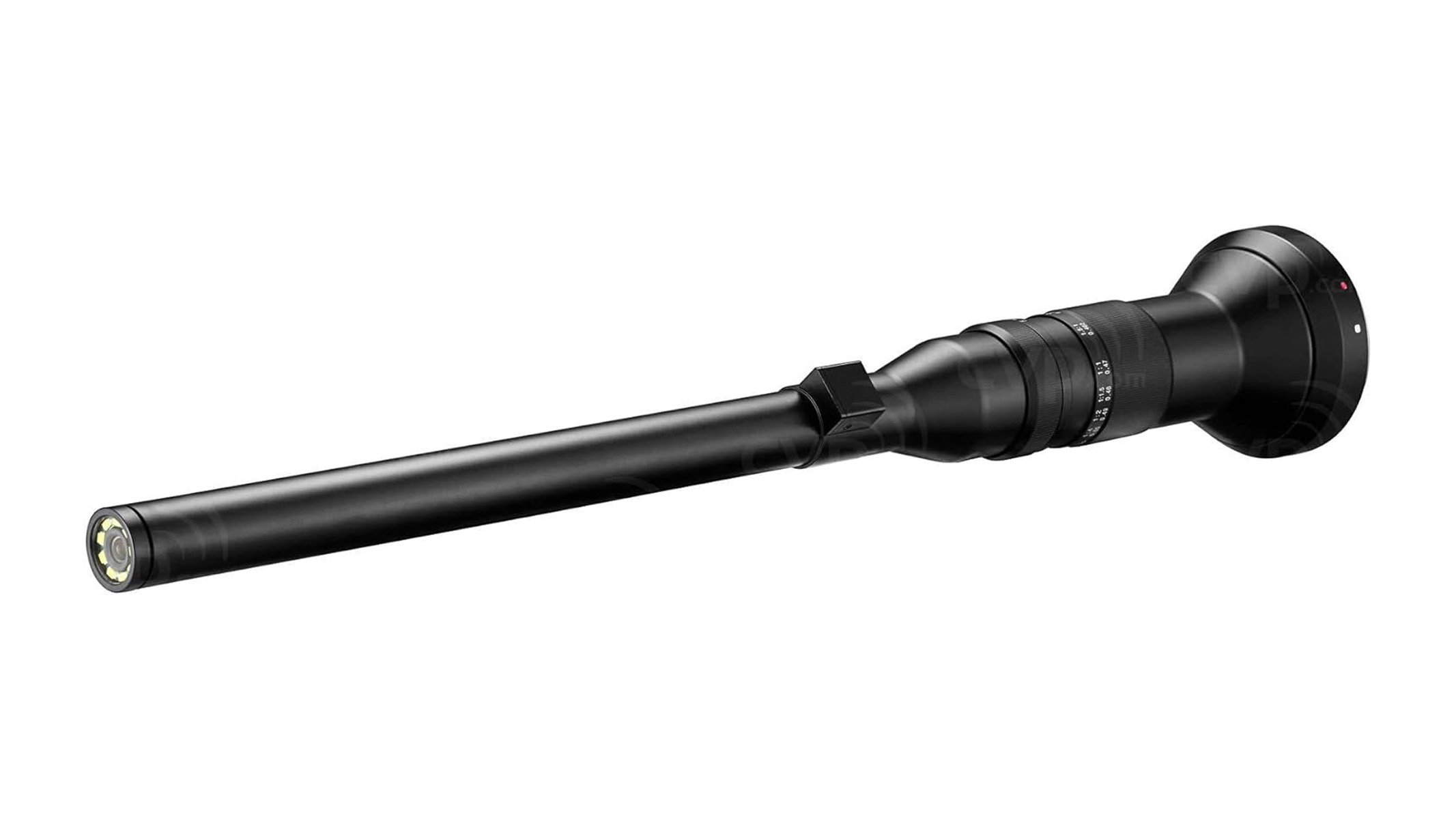
Venus Optics LAOWA 24mm f/14 2X Macro Probe
Specifications
Reasons to buy
Reasons to avoid
✅ You shoot macro video: This lens comes into its own for video work.
✅ You do commercial work: For product and food photography, this lens provides a unique perspective.
❌ You focus on stills: One of the other lenses in this guide will produce better image quality.
❌ You don't want wide angle: For a tighter crop, try a 60 mm lens or above.
Venus Optics LAOWA 24mm f/14 2X Macro Probe: A very weird and fun lens that will be best used for commercial work and video applications. With built-in LED lights and a waterproof tip, you can get it into some bizarre places you would not be able to with a standard lens.
For those of you who haven't seen a probe lens before, you'd be forgiven for thinking it looks more like something you'd defeat Voldemort with than a camera lens. Hailed as Venus Optics' "weirdest but most revolutionary" macro tool, this thing can get ridiculously close to your subject.
Probe lenses are often used by pros for commercial work, product photography and film work due to their unusual shape, and they're typically mounted on a focusing rail for precision and smooth movement. It can absolutely be used for other types of macro photography too, but you might get some funny looks if you go out in public with it.
But it's actually a very cool lens. It's essentially a long tube that's a wide-angle 24 mm f/14, and there are built-in LED lights on the front, plus it's water-sealed, so you could even shoot with the tip of the lens underwater if you wanted to. You need to provide some type of power source for the LED lights via the USB port on the side of the lens tube, so having one of the best power banks is going to be very useful here.
This lens really shines for video applications where you need a bug's eye point of view to "travel through" your surroundings, and it's one of the lenses where practicality trumps image quality. While it may not be the weapon of choice for many macro photographers, it can be helpful when photographing insects as you won't have to get the camera (and hence your body) as close to the insect, so you can avoid spooking them.
Attributes | Notes |
|---|---|
Design | Long and tube-shaped. |
Performance | 2:1 magnification ratio and 2 cm working distance. |
Functionality | Built-in LED lights help compensate for f/14 aperture. |
Best macro filter
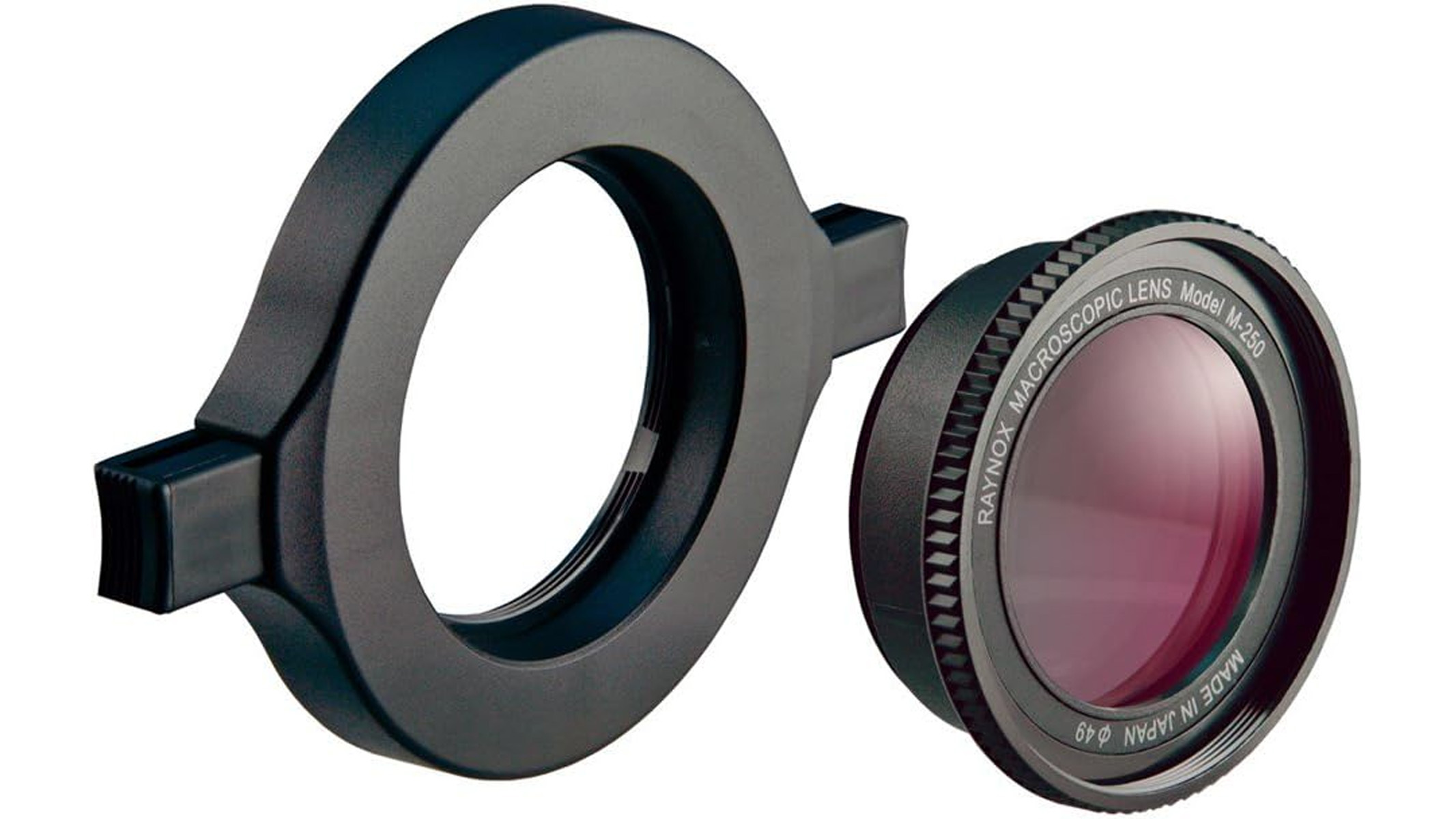
Raynox DCR-250
Specifications
Reasons to buy
Reasons to avoid
✅ You're a beginner: If you're just starting out at macro or only do macro casually, it's an excellent budget option.
✅ You want to boost the magnification of your existing macro lens: It's a fantastic filter to give extra magnification on true macro lenses.
❌ You have a very wide filter thread: You can use step-down rings, but the edges of your frame could suffer if you have a particularly large lens.
❌ You want a super-cheap filter: It's a bargain for how good it is, but there are other filter kits available for under $30 — though they likely won't be as good. Alternatively, consider a reverse mount.
🔎 Raynox DCR-250: A great little tool that macro beginners can utilize when first starting out, or that seasoned photographers can use to get a bit more magnification from their existing lens.
The Raynox DCR-250 is a clip-on "super-macro lens" that attaches to the front of your existing lens, ideal for beginners wanting to try macro for the first time without having to invest in dedicated macro lenses. But it's not just for beginners — you could also attach it to the front of an existing true macro lens for even more magnification.
Raynox advertises it as having a 2.5x magnification, but keep in mind that this will depend on which lens you are using — the longer your focal length, the more magnification. Essentially, it acts as a very sharp magnifying glass to enable you to get close-up macro shots with your existing lens.
There are two ways to attach it: either screw it straight onto the front of your lens (if your lens has a 43 mm filter thread, or you have step-down rings), or clip it onto your lens with the spring-loaded clips in the included plastic ring. The latter option makes it super-easy to attach and remove, but because of the way it's designed, it's only compatible with lenses that have a filter thread size between 52 and 67 mm.
The Raynox DCR-250 produces sharp images at the center of the frame, although this will obviously largely be at the mercy of the quality of the lens you are using. It's also worth noting that because the Raynox itself is only 49 mm, you might see some fall-off or vignetting around the edges of the frame, particularly if you're using it on a lens that is on the wider end of the 52-67 mm range. It's not a deal-breaker as there's so much magnification and you're typically focusing on the center of the frame for macro anyway, but worth keeping in mind when you're shooting.
It's a great accessory that allows for versatility in lenses that you already own, particularly if you want to dip your toe into the world of macro on a budget. It's obviously not going to match up to a true macro lens, but no one is expecting it to. That said, it's a fantastic macro filter with excellent sharpness that beginners should start out with if they don't want to use extension tubes.
Attributes | Notes |
|---|---|
Design | Convenient clip-on design much easier than screw-on filters. |
Performance | Produces pleasingly sharp results. |
Functionality | Fits filter thread sizes between 52 and 67 mm. |
Best macro lenses: Comparison
Name | Lens mount | Focal length | Minimum focus distance | Working distance | Magnification ratio | Weight | Dimensions |
Sony FE 90mm f/2.8 Macro G OSS | Sony E | 90 mm | 11 inches (28 cm) | 5.17 inches (13.15 cm) | 1:1 | 21.3 oz (602 g) | 3.11 x 5.16 inches (79 x 130.5 mm) |
Canon RF 100mm F2.8L Macro IS USM | Canon RF | 100 mm | 10.2 inches (26 cm) | 3.7 inches (9.4 cm) | 1.4:1 | 25.8 oz (730 g) | 3.21 x 5.83 inches (81.5 x 148 mm) |
Nikon NIKKOR Z MC 105mm f/2.8 VR S | Nikon Z | 105 mm | 11.4 inches (29 cm) | 5.28 inches (13.4 cm) | 1:1 | 1.4 lbs (630 g) | 3.3 x 5.5 inches (85 x 140 mm) |
FUJIFILM XF80mm f/2.8 R LM OIS WR Macro | Fujifilm X | 80 mm | 9.8 inches (25 cm) | 4 inches (10.2 cm) | 1:1 | 1.65 lbs (750 g) | 3.15 x 5.12 inches (80 x 130 mm) |
OM SYSTEM M.Zuiko Digital ED 90mm f/3.5 Macro IS PRO | OM System M43 | 90 mm | 8.8 inches (22.4 cm) | 2.7 inches (6.88 cm) | 2:1 | 1 lb (453 g) | 2.7 x 5.4 inches (69.8 x 136 mm) |
Venus Optics LAOWA 24mm f/14 2x Macro Probe | Canon EF/ Nikon F / Sony FE / Pentax K/ Leica L | 24 mm | 18.5 inches (47 cm) | 0.8 inches (2 cm) | 2:1 | 1 lb 1 oz (474 g) | 1.5 x 16 inches (38 x 408 mm) |
Contributing experts
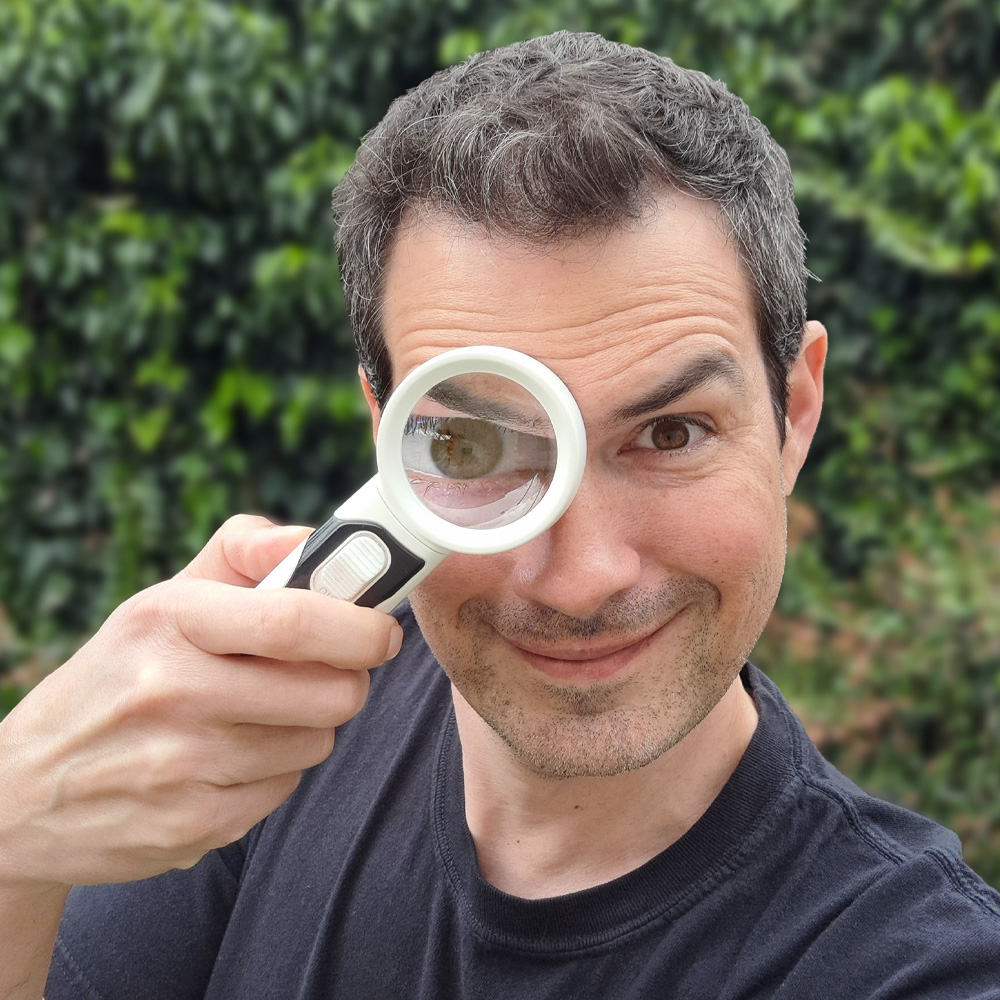
Timothy Boomer is a natural history photographer who specializes in capturing the intricate details of the miniature world. He strives to show all of his subjects in their very best light so that the overlooked and undervalued may be enjoyed and celebrated by all. His photography has been published internationally in numerous books, magazines, and scientific journals, and has been on exhibit at the California Academy of Sciences. Several of his photos have also been recognized in the Nikon Small World Photomicrography Competition.
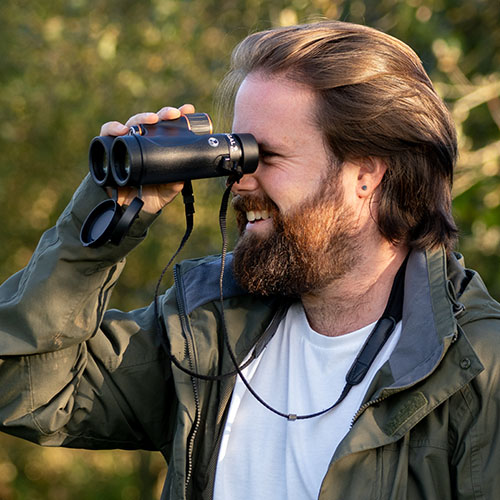
Jase has been shooting macrophotography for 20 years and has used everything from $10 close-up filters, reversed vintage lenses, all the way up to the most expensive macro lenses you can buy.
They’ve won several large scale competitions with their macrophotography and built their own custom macrophotography rig, which they continue to refine and perfect even after many years, often shooting at magnifications of 5:1 reproduction ratio.
Best Macro Lenses: Frequently Asked Questions
How do you take high quality macro photos?
Jase Parnell-Brookes told us: "Ultimately, you need to use a narrow aperture (f/8, f/11 or f/16) and use flash or LED lighting to make the exposure bright enough to see the subject. That’s because the two most difficult aspects of taking high-quality macro photos are lighting and depth of field. In order to shoot true macro (a reproduction ratio of 1:1) we must be able to photograph close to a subject and maintain focus through most, if not all, of the subject.
"A lens that can focus close enough to a subject to produce this detail often means we block natural light from the sun, thus requiring the use of flash or LED lighting. These lenses also give a shallow depth of field because of the way the light passes and focuses through the lens. To extend the depth of field, and therefore give enough detail to the subject, we must mostly shoot with an aperture of anything narrower than f/8 (i.e. f/11, f/16). This makes the image dark, and so additional lighting is also required."
Which lens is best for macro? What features or characteristics does it need to have?
Jase Parnell-Brookes told us: "A true macro lens has a reproduction ratio of 1:1. This means subjects are rendered life-size on the image sensor for optimum detail capture. So check this before proceeding with a purchase. If you are serious about macrophotography but aren’t undertaking it professionally, then many of the 1:1 macro lenses above 100mm in focal length should be suitable to provide sharp, detailed images. However, some lenses like the Sigma 105mm F2.8 DG DN MACRO are even better for wildlife macro photography because of the increased working distance between the photographer and the subject (meaning flighty subjects don’t run or fly away as often)."
What is the best aperture for macro photography?
"Shooting at true 1:1 reproduction ratio, any aperture f/8 or narrower is suitable for providing enough depth of field to get a detailed shot of the subject. However, at reproduction ratios greater than 1:1 (2:1, 3:1, 5:1) where the subject is rendered at greater-than lifesize on the image sensor will require narrower apertures to maintain that depth of field. However, at these magnification levels it’s often more useful to shoot with a technique called focus stacking" Jase Parnell-Brookes said.
What focal length is best for macro photography?
We asked macro photographer Jase Parnell-Brookes, who said: "The shorter the focal length, the wider the field of view of the subject. The converse is also true, so a 60 mm macro lens is useful for wider macro photos of fungi and flowers, but a 200 mm macro lens that zooms up on the subject (narrower field of view) will be more useful for arthropod and invertebrate photography where you want to stay far away from subjects for fear of scaring them away."
How do you get the sharpest focus when doing macro photography?
Tim Boomer, Nikon ambassador, told Live Science: "While there are exceptions, manual focus is usually the preferred method for macro photography, as autofocus tends to hunt and get easily confused. I zoom in while using Live View as I carefully adjust the focus ring until the desired area is in perfect focus. It's also important to note that as magnification increases, the depth of field decreases. As we approach life size, only a tiny sliver will be in sharp focus. The classic way to compensate for this is by using smaller apertures, such as f/22 and beyond. More of the subject will appear to be in focus, but there will also be an overall softening of the image due to diffraction.
"Sometimes this is an acceptable compromise. However, focus-stacking is often a much better technique when the situation allows: a series of images are captured with small, incremental focus shifts, and specialized software later combines the sharpest portions of each frame into a single picture with the whole subject in focus."
How do you get a deep depth of field when shooting macro?
Jase Parnell-Brookes told us: "Use either a narrow aperture (f/8, f/11, f/16) or use a wider focal length lens (60 mm instead of 200 mm). Alternatively, use the focus stacking technique as mentioned previously."
What magnification ratio is needed for macro photography?
Nikon ambassador Tim Boomer told us: "Technically, true macro photography starts at 1:1, or life-size magnification. From a practical standpoint, however, the required magnification really just depends on your subject matter. A standard macro lens that goes to life-size will cover most flowers and other common macro subjects just fine. For really tiny subjects, such as slime molds and minuscule fungi, a specialized macro lens that goes to 2x or even 5x will reveal much more intricate details, provided that it is used with meticulous technique."
What’s the difference between minimum focusing distance and working distance?
The minimum focusing distance is the distance between the subject and the camera's sensor (symbolised on the camera as a circle with a horizontal line through it). The working distance is the distance between the end of the lens (the glass element) and the subject, which is important in macro photography as it will vary depending on the length of your lens.
Do you need to use flash for macrophotography?
Jase Parnell-Brookes told Live Science: "You don’t strictly need flash, but due to the higher magnifications and extreme depth of fields in macro photography, it is encouraged due to the required narrower aperture settings. You should dial in the settings in your exposure triangle first (aperture, shutter speed and ISO sensitivity) based on your lens choice. Then add flash so that the exposure on the rear LCD screen and the histogram looks well exposed. This approach is subjective but aided by this method. Higher flash power will make the flash gun take longer to recycle before it can flash again, so if you are photographing moving subjects, it’s best to keep the flash power as low as possible before sacrificing exposure values.
"It’s good to use a diffuser when using natural light, and there are several diffusers available online or you can make your own, even with a thin sheet of paper. A diffuser for a flashgun is a must, as bare-bulb flash (even macro flash rings that attach to lenses) can be far too harsh and produce contrasty images that are unflattering to subjects."
What do extension tubes do? How do they compare to a true macro lens?
Contributing expert Tim Boomer says: "Extension tubes are hollow tubes that attach between the camera and the lens. They allow the lens to focus closer and increase magnification. The more extension is used, the greater the effect. They are a relatively inexpensive way for beginners to dabble in close-up photography without investing in a dedicated macro lens. However, extension tubes do have their downsides. For one, you lose infinity focus when a tube is attached. You also lose light and therefore need to compensate with longer shutter speeds and/or higher ISO.
There is also a common misconception that extension tubes don't degrade image quality since they don't contain any glass elements, but this is simply not true. Today's lenses are carefully engineered optics that are designed to be attached a specific distance from the camera sensor. In my experience, changing that distance can absolutely degrade image quality. Some lenses will tolerate it better than others, but the results are unlikely to match what a dedicated macro lens can achieve. For anyone who's passionate about exploring the miniature world, I recommend saving up for a true macro lens."
Latest updates
Sep 10, 2025: Linked to our full Canon RF 100mm F/2.8L Macro IS USM review.
How we tested the best macro lenses
How we test the best macro lenses
Best cameras for wildlife photography
Best cameras
Best astrophotography cameras
Best beginner cameras
Best beginner cameras for astrophotography
Best binoculars
Best binoculars for birdwatching
Best compact binoculars
Best microscopes for students
Best microscopes for kids
Best wildlife observation equipment
When selecting the best macro lenses for this guide, we consider a lens's focal length, minimum focusing distance and working distance alongside the magnification ratio, and only include true macro lenses with a 1:1 magnification or more. We look at image quality throughout the entire frame for photo and video applications, how well the lens handles chromatic aberration and distortion, plus the design and practicality of the lens itself when it comes to macro purposes.
Get the world’s most fascinating discoveries delivered straight to your inbox.
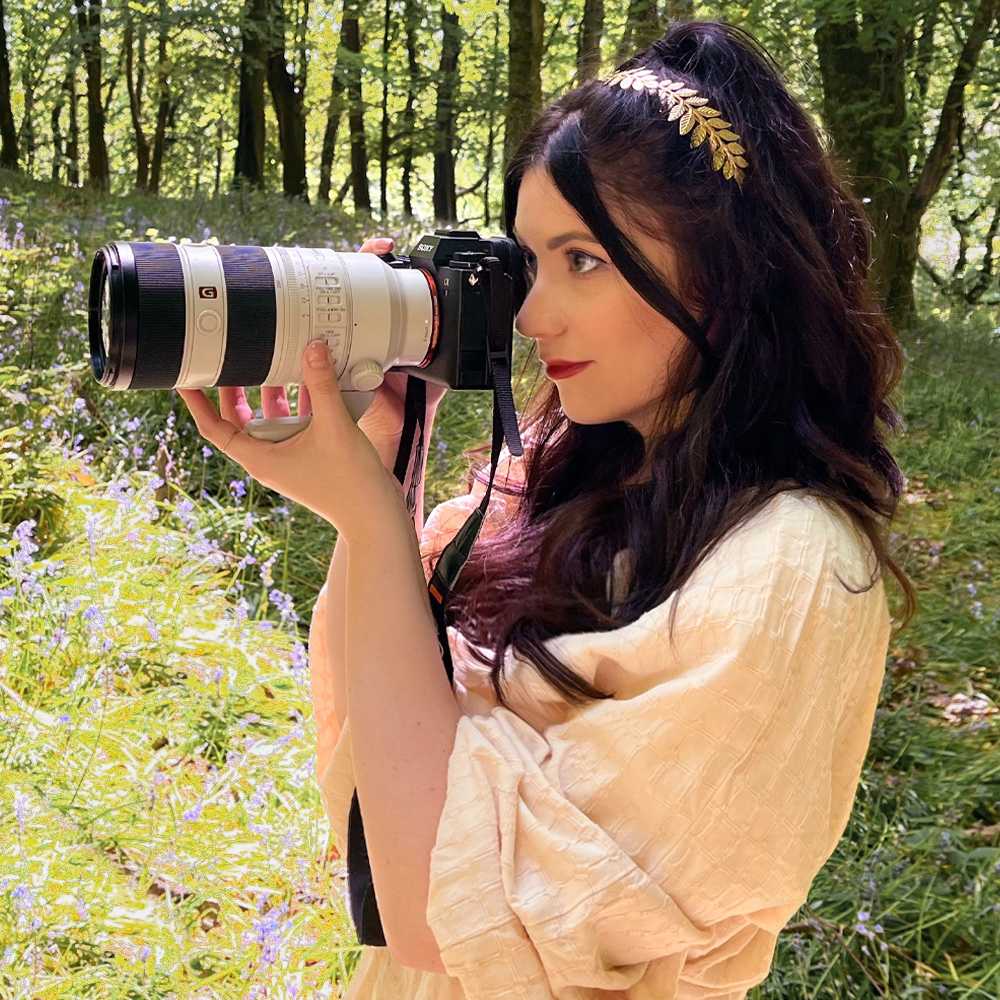
Kimberley Lane, E-commerce writer for Live Science, has tested a wide range of optical equipment, reviewing camera gear from Sony, Canon, OM System and more. With over 6 years of photography experience, her skills span across landscape and seascape photography, wildlife, astrophotography and portrait work. Her photos have been featured in a number of national magazines, including Digital Camera World and Cosmopolitan. She has also contributed to our sister site Space.com and Tech Radar, and she regularly uses binoculars and telescopes to stargaze in the dark skies of South Wales.


